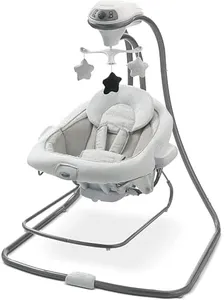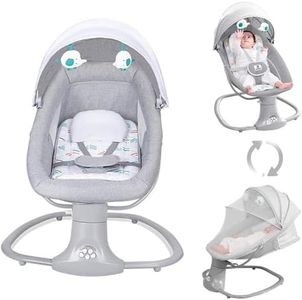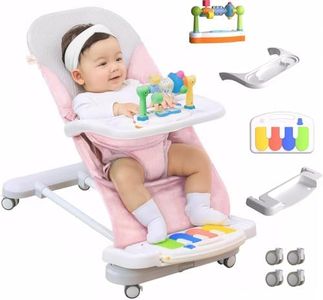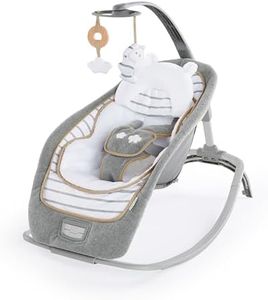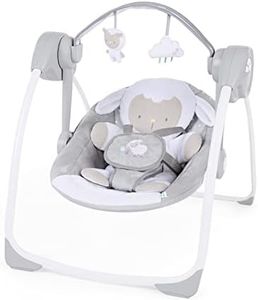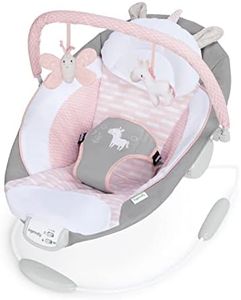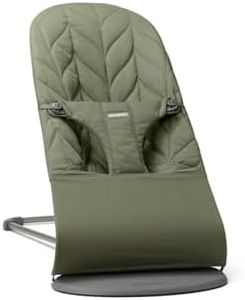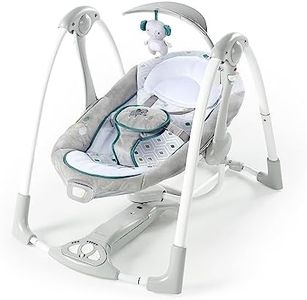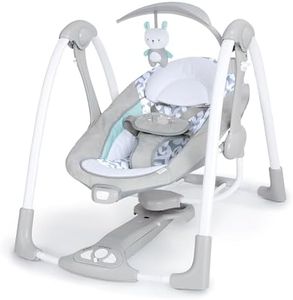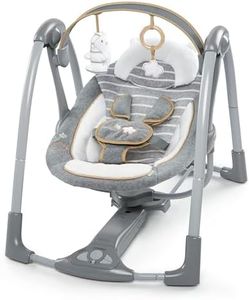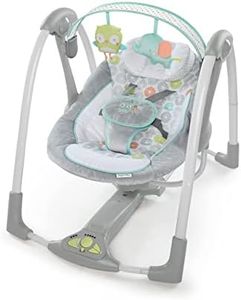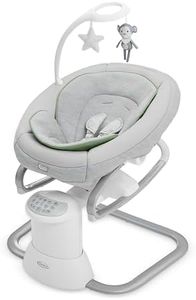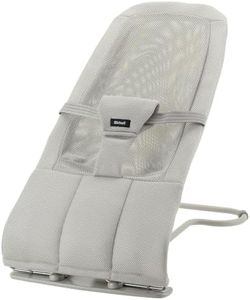We Use CookiesWe use cookies to enhance the security, performance,
functionality and for analytical and promotional activities. By continuing to browse this site you
are agreeing to our privacy policy
10 Best Baby Rockers
From leading brands and best sellers available on the web.Buying Guide for the Best Baby Rockers
Choosing the right baby rocker can make a world of difference for both your baby's comfort and your own convenience. Before buying, think about how and where you'll use the rocker most often—whether it's to soothe your baby to sleep, keep them entertained, or give your arms a rest. Consider your living space, your baby's age and size, and any features that would make daily routines easier for you. Always keep safety in mind and look for designs that fit seamlessly with your family's lifestyle.Safety FeaturesSafety features are the most crucial aspect of any baby rocker. These include sturdy construction, secure harnesses (like 3-point or 5-point safety belts), non-slip bases, and stable frames that prevent tipping. When choosing, always look for certifications or compliance with safety standards, and avoid models that have small, removable parts that could pose a choking hazard. Consider your baby's age and activity level—in general, a secure harness is essential for younger or very active babies.
Rocking ModesRockers often come with different modes, such as manual rocking, automatic swinging, vibrating, or fixed stationary positions. Some rockers allow you to switch between these modes to soothe your baby in various ways. If you want your baby to nap, a gentle automatic rocking or vibration might be ideal. If you're aiming to stimulate or entertain, a manual rock may provide more interaction. Decide if you prefer hands-free automated features or simple manual rocking based on your typical routines.
Weight and Age LimitEach rocker is designed for a specific weight and age range. This spec tells you how long the rocker can safely be used as your baby grows. Lighter, compact rockers are often meant for young infants, while sturdier models may accommodate older babies or even toddlers. Check the maximum weight limit before purchasing and consider how quickly your baby will outgrow the rocker, especially if you plan to use it frequently or for more than one child.
Portability and StoragePortability relates to how easy it is to move the rocker between rooms or take it on trips, while storage refers to whether the rocker folds or disassembles for easy stowing. If you have limited space or expect to travel, a lighter and foldable rocker will be more convenient. Heavier, more stationary models might suit families who intend to keep the rocker in a single spot.
Comfort and PaddingThe level of padding and the design of the seat are important for your baby's comfort, especially during longer rocking sessions. Some rockers have plush, removable, and washable covers, while others are simpler. If your baby enjoys napping in the rocker, an ergonomic and well-cushioned seat is essential. Likewise, if your climate is warm, breathability of the fabric may play a role. Pick a rocker with padding and seat angle that matches your baby's comfort needs.
Entertainment FeaturesMany rockers come with additional toys, mobiles, or built-in music and nature sounds to keep your baby engaged. The value and appeal of these features depend on your baby's temperament—fussy babies might benefit from soothing music or gentle lights, while others enjoy being entertained with dangling toys. Consider your baby's preferences and how much stimulation is appropriate for their age when evaluating these extras.
Ease of CleaningBabies are prone to spit-ups and diaper leaks, so an easy-to-clean rocker is a big help. Look for rockers with removable, machine-washable covers and smooth surfaces that can be wiped down quickly. If you expect frequent messes, prioritize models with straightforward cleaning instructions to save time and keep things hygienic.
